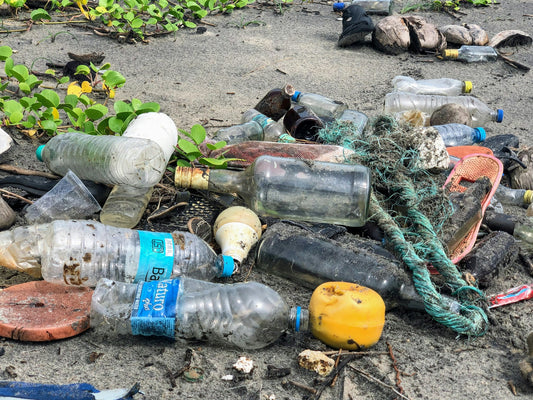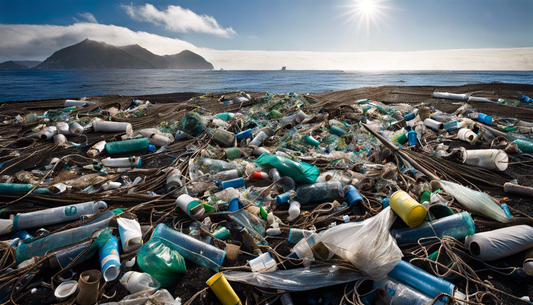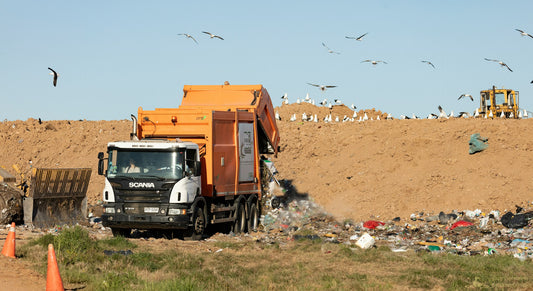Share
Plastic pollution is one of the most serious environmental challenges, adversely affecting ecosystems, wildlife, and human health.
While the world continues to suffer from the effects of overreliance on plastics, several countries are leading the way in adopting relevant policies to address this issue.
Last month, we've already shed light on countries that achieved plastic-free life and today we continue with successful initiatives in three countries.
In this list, the US, Canada, and Norway are notable for their concepts and efforts to tackle plastic pollution.
In this article, we will focus on what these three countries are doing to reduce plastic pollution.
1) United States

National Strategy and Legislative Action:
The United States have come up with a multi-sectoral strategy that aims at tackling the issue of plastic pollution.
The EPA has published a copy of the “National Strategy to Prevent Plastic Pollution,” which envisions drastic measures to ban plastic waste from land-based sources by 2040.
Read more about the effectiveness of plastic bans here.
The strategy aims at minimizing the use of plastics, promoting better handling of products after use, and ensuring that plastics do not find their way into water bodies.
Different activities include improving the design of plastic goods to make them reusable, increasing the removal of solid waste, and decreasing single-use plastics such as shopping bags and food packaging.
It is great to see that the strategy is not focused on single symptoms of the plastic crisis, but rather tries to achieve circularity.
The U.S Plastic Pact
The U.S. Plastics Pact is an initiative aimed at reducing plastic pollution in the United States. It has set four specific goals to be achieved by 2025:
- Identify and remove unnecessary plastic packaging.
- Make all plastic packaging reusable, recyclable, or compostable.
- Recycle or compost 50% of plastic packaging.
- Use at least 30% recycled or biobased materials in plastic packaging.
Public and Private Sector Initiatives:
The Department of the Interior has stepped up efforts to install water bottle filling stations in national parks and other government facilities to reduce the use of single-use plastic bottles.
Examples include the National Park Service’s Zero Landfill Initiative, which has the goal of reducing the amount of waste that is sent to landfills by increasing recycling and waste management.
Legislation and Funding:
The Bipartisan Infrastructure Law has also allocated significant funding for recycling initiatives, such as grants to local communities and tribes to develop their waste management systems.
Such financial assistance is crucial for increasing collection and recycling, as well as decreasing the amount of quality and non-recyclable material in the stream.
Community Engagement:
The USA focuses on educating the public and engaging communities in the reduction of waste.
Measures like the Earth Week events and local cleaning drives call upon people to take action against the use of plastic and safeguard the environment.
2) Canada

Comprehensive Ban on Single-Use Plastics:
Canada is at the forefront of countries that are polluted by plastic.
According to statistics, in 2019, 6.2 million tonnes of plastic was produced in Canada, with more than one-third of it for packaging alone.
Canada has started taking action by adopting measures such as the prohibition of certain single-use plastics.
The Canadian government has banned the production and importation of such products as plastic checkout bags, cutlery, and straws.
Since 2022 many single use plastics like checkout bags are now banned in Canada. Before the ban, the average household used more than 1100 plastic bags annually.
This ban is one of several measures to ensure that the country eliminates at least 75% of plastic waste by 2030.
Extended Producer Responsibility:
Canada has implemented EPR policies that require manufacturers to take responsibility for the production chain as well as post-consumer waste.
This policy encourages producers to create products that can be recycled and disposed of sustainably, compared to the previous policy.
Innovation and Research:
Canada’s federal government actively promotes research and development concerning plastic waste.
Initiatives such as the Canadian Plastics Innovation Challenge provide funding for projects such as creating technologies for the recycling and reuse of plastics.
This initiative entails a partnership between the government, industries, and academic institutions for the development of sustainable solutions.
Community and Environmental Impact:
Canada’s efforts have contributed to the reduction of plastic waste, making natural landscapes and water bodies cleaner.
Outreach and education are another important part of the plan, as Canadians are informed and encouraged to make more environmentally friendly decisions.
3) Norway

National Strategies and Global Leadership:
Norway is considered as one of the most advanced nations in the effort to tackle plastic pollution.
The current Norwegian government has developed national strategies that focus on cutting down plastic pollution and improving recycling processes.
They adopted new regulations in 2022 that require municipalities to sort at least 70% of plastic waste from households by 2035.
This is part of efforts to strengthen the infrastructure for secondary raw materials and increase plastic recycling.
Norway is also an active member of international organizations and other bodies that seek to address plastic pollution through treaties and agreements.
Deposit-Return Schemes and Recycling:
The most successful marketing initiative in Norway is the deposit-return system for beverage containers.
In this system, consumers are charged a token fee when they purchase items such as plastic bottles and cans, and this amount is refunded to them once they return the bottles and cans to the recycling companies.
An impressive 95% of plastic bottles are recycled via the new scheme, thereby minimizing plastic waste.
Marine Litter and Ocean Clean-Up
Norway has a long coastline and pays close attention to marine litter.
The country is involved in international programs focused on marine debris and contributes to the funding of projects related to clearing plastic waste from the seas.
This is evident from the significant amounts of money that Norway has allocated to marine environment conservation, including ocean cleanup.
Benefits From These Initiatives
Environmental Benefits:
Minimizing the use of plastics helps avoid littering the environment and water bodies,ies hence enhancing the conservation of habitats and wildlife.
This is because cleaning up and participating in recycling activities play a vital role in preserving natural environments and reducing the amount of plastic waste in the environment.
Public Health Improvements:
The elimination of plastic also decreases the chances of toxins affecting the food chain and water sources, thus improving the health of the people.
Clean environments also play a role in the improvement of the quality of life among the people in societies.
Economic Advantages:
The recycling of materials and the construction of facilities for collecting and processing recyclable materials provide work, which in turn promotes economic development.
Circular economy measures mean that resources are always recycled, which is economically sustainable in the long run.
What should other countries learn?
The countries mentioned above took strong action against plastic pollution, which has given a good message to other countries.
They play an active role in providing leadership in formulating international conventions and treaties that enable the fight against plastic pollution to take place globally.
We have seen that successful strategies to minimize plastic pollution need to aim at the full lifecycle of plastics from production to disposal.
Only if the flood of produced single-use plastic is limited, measures around recycling and garbage collection can be successful.
What does your country do to tackle plastic pollution? Leave a comment below and engage in the discussion!
We hope you enjoyed this article. If you want to read more like this, make sure to check out our Blog and follow us on Instagram. If you are interested in truly sustainable products, check out our Shop.








